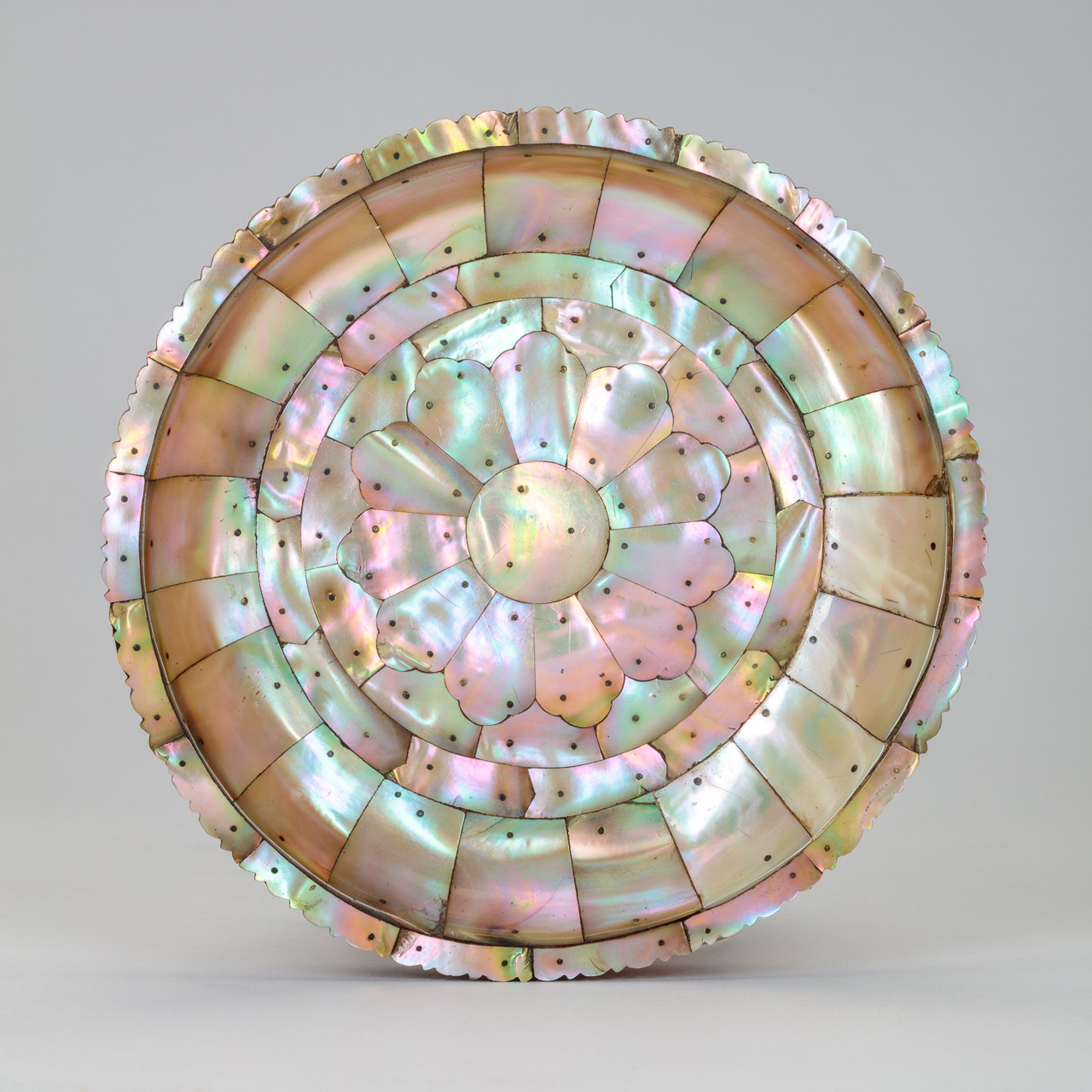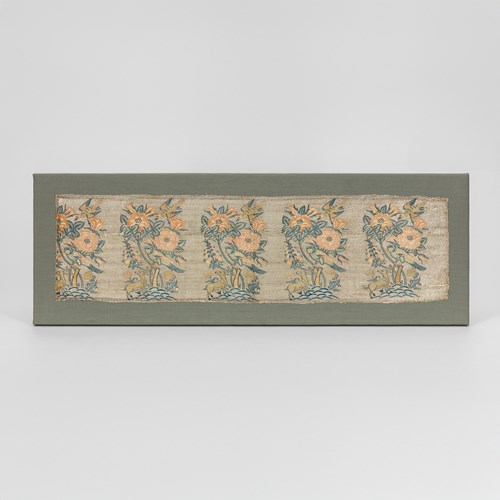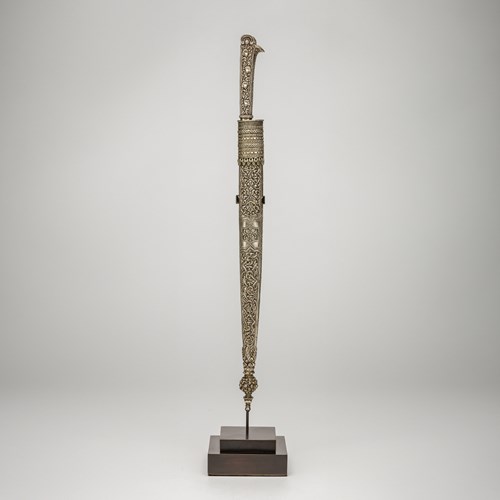Marketplace
Gujarat Dish
Gujarat Dish
Epoque 17th century
Origine Gujarat, India
Medium Mother-of-pearl
Dimension 18 cm (7¹/₈ inches)
The mother-of-pearl dish is of shallow rounded form with a short foot and cusped edges. Both the interior and exterior of the dish are comprised of pinned sections fashioned with lobed and rectangular pieces of mother-of-pearl. The central well of the dish forms a stylised rosette while the reverse of the dish has a geometric pattern. The rectangular and lobed pieces are secured by brass bands and pins.
There are two similar objects in the Victoria and Albert Museum, London, Accession Numbers 4283-1857 and 4282-1857. According to Jaffer, when the museum acquired these mother-of-pearl pieces in 1857 they were assumed to be Italian in origin because of their European form (Jaffer, p. 39). Documentation from the Green Vaults in Dresden, Germany, proves that Gujarati dishes of this style were imported from Gujarat to Europe as early as the second quarter of the 16th century (see Jaffer, p. 39). The commissioning of these particular wares is generally associated with the Portuguese traders who were the earliest merchants in western India (see Jaffer, p. 39). One of the examples in the Victoria and Albert Museum, Accession Number 4283-1857, depicts a very similar style of rosette in the central well. However, ours has a concentric band between the flower-head and the petals.
Provenance: Private UK Collection
Literature: Jaffer, A. Luxury Goods from India: The Art of the Indian Cabinet-Maker, V&A Publications, London, 2002.
Stock no.: A5423
There are two similar objects in the Victoria and Albert Museum, London, Accession Numbers 4283-1857 and 4282-1857. According to Jaffer, when the museum acquired these mother-of-pearl pieces in 1857 they were assumed to be Italian in origin because of their European form (Jaffer, p. 39). Documentation from the Green Vaults in Dresden, Germany, proves that Gujarati dishes of this style were imported from Gujarat to Europe as early as the second quarter of the 16th century (see Jaffer, p. 39). The commissioning of these particular wares is generally associated with the Portuguese traders who were the earliest merchants in western India (see Jaffer, p. 39). One of the examples in the Victoria and Albert Museum, Accession Number 4283-1857, depicts a very similar style of rosette in the central well. However, ours has a concentric band between the flower-head and the petals.
Provenance: Private UK Collection
Literature: Jaffer, A. Luxury Goods from India: The Art of the Indian Cabinet-Maker, V&A Publications, London, 2002.
Stock no.: A5423
Epoque: 17th century
Origine: Gujarat, India
Medium: Mother-of-pearl
Dimension: 18 cm (7¹/₈ inches)
Provenance: Private UK Collection
Plus d'œuvres d'art de la Galerie




_T638839371761583625.jpg?width=500&height=500&mode=pad&scale=both&qlt=90&format=jpg)




 The Peacock_T638206163549090341.JPG?width=500&height=500&mode=pad&scale=both&qlt=90&format=jpg)